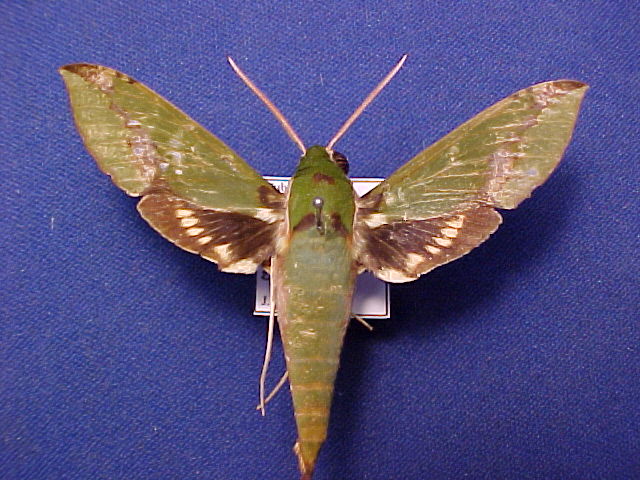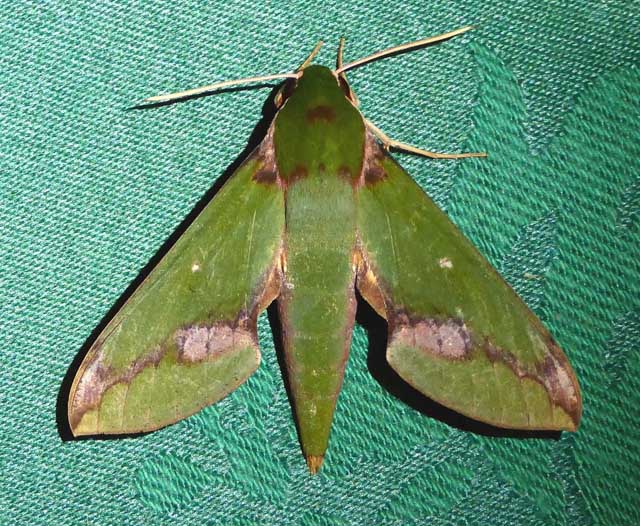
Xylophanes chiron cubanus male courtesy of John Vriesi.
This site has been created by Bill Oehlke. Comments, suggestions and/or additional information are welcomed by Bill.
TAXONOMY:
Family: Sphingidae, Latreille, 1802 |

This site has been created by Bill Oehlke. Comments, suggestions and/or additional information are welcomed by Bill.
TAXONOMY:
Family: Sphingidae, Latreille, 1802 |
The pronunciation of scientific names is troublesome for many. The "suggestion" at the top of the page is merely a suggestion. It is based
on commonly accepted English pronunciation of Greek names and/or some fairly well accepted "rules" for latinized scientific names.
The suggested pronunciations, on this page and on other pages, are primarily put forward to assist those who hear with internal ears as they read.
There are many collectors from different countries whose intonations and accents would be different.
"Xylo" is the Greek word for wood. The specimen type for the genus Xylophanes is Xylophanes anubus. Perhaps ? when Hubner
examined this species, the yellow-orange and brown tones of the forewings suggested wings of wood.
The species name "chiron" comes from Greek mythology where Chiron is the wise centaur who tutors Achilles, Hercules and Asclepius. The subspecies name is for the specimen type locality, Cuba.

Xylophanes chiron cubanus, Vinales, Cuba,
July 18, 2015, courtesy of Tim Norriss,
at http://www.butterfliesofcuba.com/bombicoidea.html.
Moths emerge approximately one-two months after larvae pupate.
Use your browser "Back" button to return to the previous page.
Goto Main Sphingidae Index
Goto Macroglossini Tribe
Goto Central American Indices
Goto Carribean Islands
Goto South American Indices
Goto U.S.A. tables